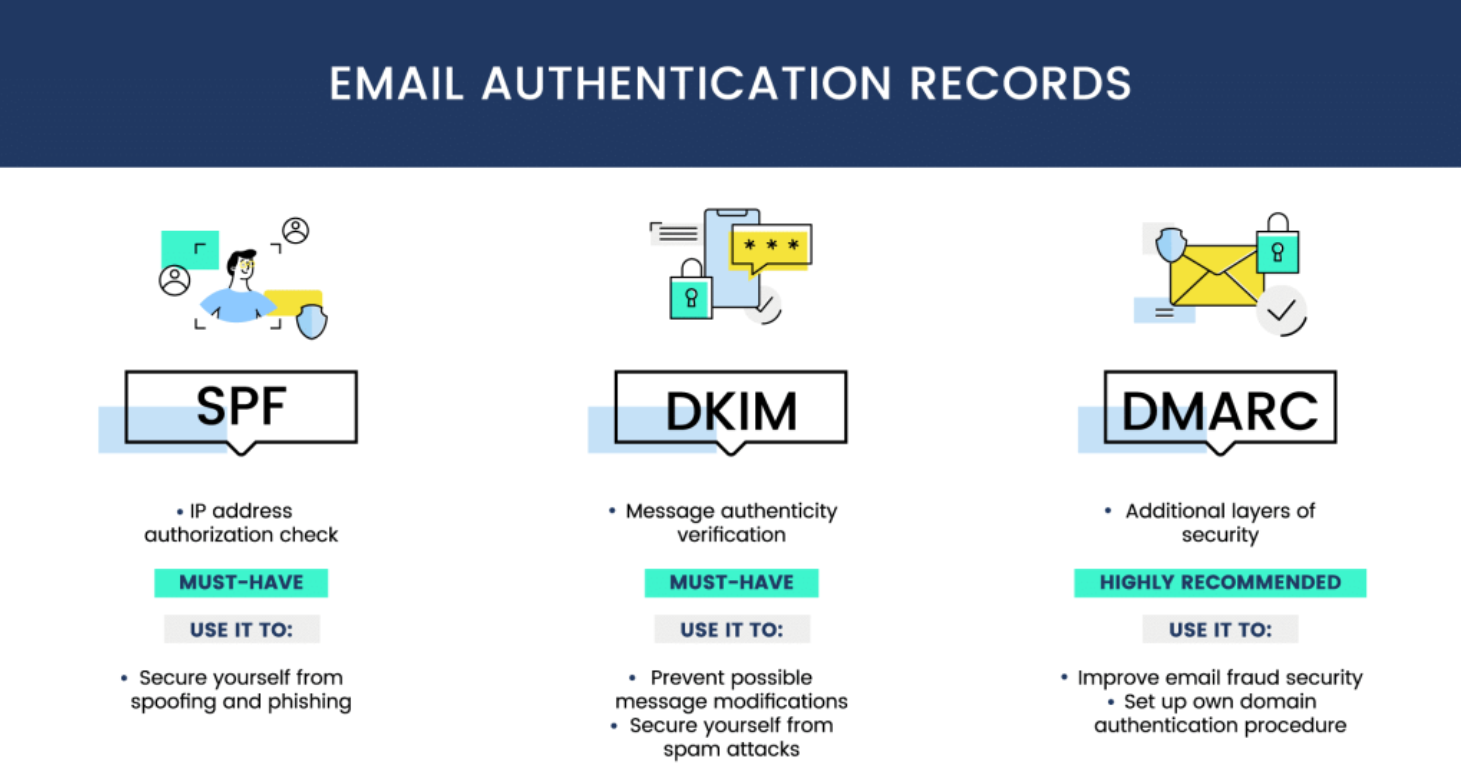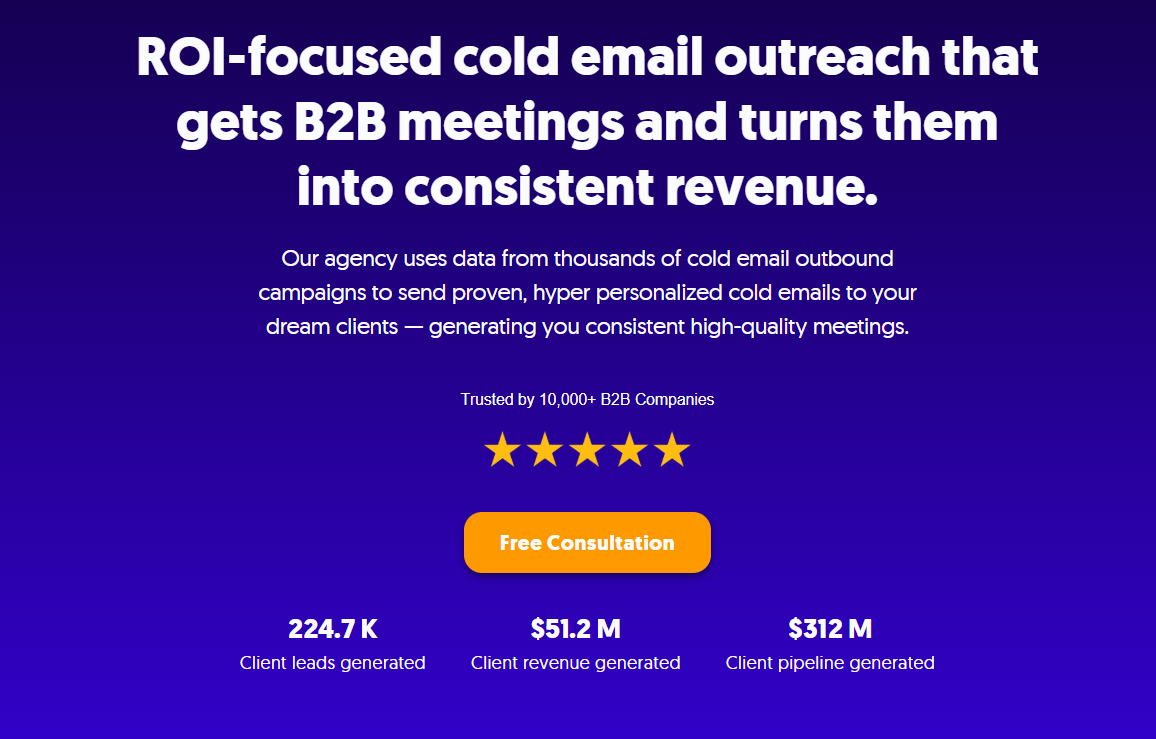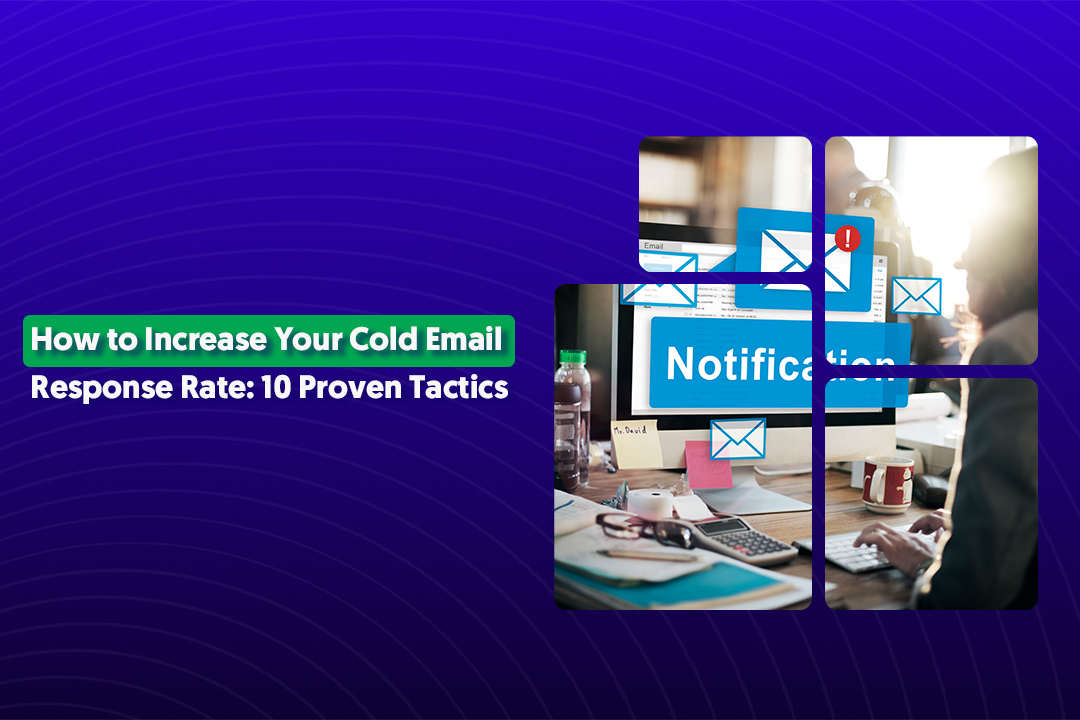Key Takeaways
- Email deliverability means landing in the inbox, not just getting delivered to the server.
- Authenticate your domain with SPF, DKIM, and DMARC before sending any campaigns.
- Warm up new domains gradually and maintain consistent sending volume to build trust with ISPs.
- Clean your email list regularly and verify contacts before sending to avoid high bounce rates.
- Craft personalized, conversational content and avoid spam trigger words that flag filters.
- Monitor your sender reputation, blacklist status, and engagement metrics weekly (or daily for high-volume senders).
- Encourage replies and engagement—ISPs reward two-way conversations with better inbox placement.
If your emails aren't landing in the inbox, nothing else matters.
You could craft the perfect subject line, write a copy that converts, and target your ideal prospects, but if your message ends up in spam, you've already lost.
Let's clear up a common confusion first.
Email deliverability isn't the same as email delivery. Delivery just means the recipient's server accepted your email. Deliverability means it actually made it to the inbox where people will see it.
For cold email outreach lead gen, this distinction becomes critical. Poor deliverability doesn't just tank your response rates—it burns through your resources and puts your domain at risk of getting blacklisted.
When you're running outbound at scale, you can't afford to have 30-40% of your emails disappearing into spam folders.
Most guides on how to improve email deliverability will tell you to "authenticate your domain" or "warm up your IP address." Sure, those help. But we're going beyond the basics here.
This post breaks down 9 proven tactics specifically designed for improving email deliverability in a cold email outreach —the kind of strategies that work when you're sending to people who've never heard from you before.
We've used these exact tactics to help thousands of clients keep their outreach out of spam and in front of decision-makers. Let's dig in.

Why Email Deliverability Is a Critical Business Metric
Email deliverability directly impacts your engagement rates, reply rates, conversions, and ultimately your ROI.
If half your emails are hitting spam, you're essentially cutting your results in half before anyone even sees your message.
So what's a good deliverability rate? According to Mailtrap, excellent email deliverability sits at 95% or higher. Good deliverability ranges from 85-94%.
Anything below that, and you've got a serious problem that's costing you money.
Here's what happens when deliverability tanks:
- Your bounce rates spike and spam complaints pile up.
- Email providers start flagging your domain as suspicious.
- You end up on blacklists that are incredibly difficult to get off.
- Your sender reputation takes a hit that affects all future campaigns.
For cold outreach, these risks multiply. You're reaching out to prospects who didn't opt into your list. That means email providers are already watching your activity more closely.
One wrong move, sending to bad addresses, triggering spam filters, getting too many complaints—, and your entire domain could get blocked.
This is why understanding how to improve email deliverability isn't just a technical checkbox. It's fundamental infrastructure work that protects your outreach capability.
Top 9 Ways to Improve Email Deliverability
These 9 tactics combine technical best practices, sender-reputation building, content optimization and scheduling strategy.
1. Authenticate Your Domain with SPF, DKIM & DMARC
Your domain's mailing infrastructure matters more than you think. ISPs actively look for authentication protocols to verify you're a legitimate sender.
Without them, you're essentially showing up to a security checkpoint without an ID.
Here's what each protocol does:
1️⃣ SPF (Sender Policy Framework) tells receiving servers which IP addresses are authorized to send emails from your domain.
2️⃣ DKIM (DomainKeys Identified Mail) adds a digital signature to your emails, proving they haven't been tampered with in transit.
3️⃣ DMARC (Domain-based Message Authentication, Reporting & Conformance) builds on both SPF and DKIM, giving you control over what happens when authentication fails.
Implementation checklist:
- Add SPF record to your DNS settings
- Configure DKIM signing with your email provider
- Set up DMARC policy (start with "none" for monitoring, then move to "quarantine" or "reject")
- Test your setup using free authentication checkers
Even cold email outreach campaigns must use proper authentication. Skip this step, and ISPs will flag your emails before they even get a chance to be read.

2. Warm Up Your Sending Domain/IP & Ramp Up Volume Gradually
Starting cold with high email volume is like sprinting before you've learned to walk. When you use a new domain or IP for outreach, you need to warm it up to build a reputation with ISPs.
They're watching for suspicious activity, and a brand-new domain suddenly sending hundreds of emails screams "spammer."
Sample warm-up schedule:
- Days 1-3: Send 10-20 emails to highly engaged contacts.
- Days 4-7: Increase to 50 emails per day.
- Week 2: Ramp up to 100-150 emails daily.
- Week 3: Scale to 200-300 emails daily.
- Week 4+: Reach your target volume.
For cold email outreach, start by sending to your highest-quality prospects first—people most likely to open and engage.
Those positive signals (opens, clicks, replies) show ISPs that recipients want to hear from you. It builds trust in your domain before you scale up.
Check Out: Top Email Warm-Up Tools to Improve Deliverability
3. Clean and Segment Your Email List Regularly
Sending to invalid emails, inactive users, or disengaged contacts is one of the fastest ways to tank your deliverability.
High bounce rates signal to ISPs that you're not maintaining your list properly. Too many unengaged recipients suggest you're spamming people who don't want your emails.
List hygiene best practices:
- Remove hard bounces immediately.
- Suppress soft bounces after 3-5 attempts.
- Cut contacts who haven't engaged in 6+ months.
- Verify email addresses before adding them to campaigns
For cold email outreach, this means verifying your leads before you send. Avoid purchased lists or scraped databases full of outdated contacts.
Use email verification tools to catch invalid addresses, role accounts (like info@ or admin@), and disposable email domains. Quality over quantity wins every time when improving email deliverability.
4. Monitor Sender Reputation, Blacklists & Feedback Loops
Your sender reputation is like a credit score for email. ISPs use it to decide whether your messages deserve inbox placement or the spam folder.
You can't improve what you don't measure, so monitoring should be part of your routine.
What to track:
- Domain reputation scores (using tools like Google Postmaster, Sender Score, or Talos Intelligence).
- IP reputation and blacklist status (check sites like MXToolbox, Spamhaus, and Barracuda).
- Spam complaint rates from feedback loops
Set up feedback loops with major ISPs so you're notified when recipients mark your emails as spam.
When you get flagged, take action immediately—suppress those contacts and review what triggered the complaint.
For cold outreach, monitoring these metrics helps you catch deliverability issues early before they snowball into domain reputation damage.
5. Craft Engaging Content & Avoid Spam Triggers
Your email content directly impacts whether ISPs trust you enough to deliver to the inbox.
Certain words, patterns, and formatting choices trigger spam filters faster than you can say "limited time offer."
Content best practices:
- Keep subject lines under 50 characters and avoid ALL CAPS or excessive punctuation.
- Use short paragraphs (2-3 sentences max) for readability.
- Include a plain text version alongside HTML emails.
- Limit images and links (too many scream "marketing blast").
- Personalize the greeting and opening line.
- Add a clear, specific call to action.
Spam trigger words to avoid: Free, guarantee, cash, act now, click here, congratulations, winner, urgent, limited time, no obligation, risk-free
Writing a cold email should feel like a real person reaching out, not a marketing robot. Use a recognizable "From" name (your actual name, not "Sales Team"), tailor your message to the recipient's situation, and dial back the aggressive sales language.

6. Maintain Consistent Sending Schedule & Volume
ISPs notice when your sending patterns suddenly change. If you typically send 100 emails a day and then blast 1,000 on Tuesday, that irregularity raises red flags.
Consistency builds trust. Pick a daily send limit that matches your domain's capacity and stick to it. For a new domain, that might be 50-100 emails per day. For an established, warmed-up domain, you could safely send 500+ daily.
For cold email outreach, define your daily send limits based on your domain age and reputation. If you're using multiple domains or subdomains for outreach at scale, spread the volume across them rather than overloading one.
Stay within safe thresholds, and ISPs will see you as a predictable, legitimate sender—which strategy will improve email deliverability more than erratic volume spikes ever could.
Explore Further: Best Time to Send Cold Emails (Backed by Data & Research)
7. Manage Engagement: Encourage Opens, Replies & Clicks
ISPs don't just look at what you send—they watch how recipients react. Cold email response rates, opens, clicks, and especially replies signal that people want to hear from you.
High engagement tells Gmail, Outlook, and other providers that you're a good sender who deserves inbox placement.
Tactics to boost engagement:
- Segment your list and send to your most engaged contacts first.
- Write subject lines that spark curiosity without being clickbait.
- Ask genuine questions that invite replies.
- Use personalized calls to action relevant to each recipient.
- Never use "no-reply" email addresses (they kill engagement and look spammy).
For cold outreach, encouraging replies is especially critical. ISPs view two-way conversations as the gold standard of legitimate email.
End your emails with a question or a low-friction response option. Make it easy for prospects to engage, and your deliverability will benefit from those positive signals.
8. Use A/B Testing and Deliverability Monitoring Tools
You can't optimize email deliverability by guessing. Testing and monitoring give you the data to make informed decisions about what works and what doesn't.
Tools to use:
- Inbox placement testers (like GlockApps or Mail-Tester) show you where your emails land across different providers.
- Spam score checkers identify problematic content before you send.
- A/B testing platforms help you test subject lines, sending times, and content variations.
For cold email outreach, run pilot batches before scaling up. Send to a small segment first, check inbox placement rates, and adjust based on the results.
Test different sending times, subject line styles, and email copy to see what generates the best engagement—and the best deliverability.
More to Know: How to Choose the Best Cold Email Outreach Software for Your Sales Team
9. Comply with Laws and Provide Clear Opt-Outs
Legal compliance isn't just about avoiding fines—it directly impacts your deliverability. ISPs look at whether you're following regulations like CAN-SPAM (US), GDPR (EU), and CASL (Canada).
Violating these laws increases spam complaints, which destroys your sender reputation.
Compliance essentials:
- Include a physical mailing address in every email.
- Provide a clear, functional unsubscribe link.
- Honor opt-out requests within 10 business days (or 48 hours under GDPR).
- Avoid misleading subject lines or "From" names.
- For GDPR, ensure you have a lawful basis for contacting recipients.
Even though your cold email prospects didn't opt in, you still need to offer a clear way out.
Respectful outreach means making it easy for people to unsubscribe if they're not interested. ISPs track complaint rates, and forcing people to jump through hoops to opt out will spike those numbers fast.
Bottom line: Play by the rules, respect recipient preferences, and your deliverability will stay strong.
How Cleverly Supports Cold Email Outreach with Deliverability Excellence
Look, improving email deliverability takes time, technical know-how, and constant monitoring. For most teams, it's a full-time job on top of everything else you're trying to accomplish.
That's where we come in.

At Cleverly, we've spent years perfecting cold email outreach at scale. We've helped over 10,000 clients generate leads with companies like Amazon, Google, Uber, PayPal, Slack, and Spotify—resulting in $312 million in pipeline revenue and $51.2 million in closed revenue.
Our entire infrastructure is built around deliverability excellence.
We handle the domain authentication, the warm-up schedules, the list cleaning, the content optimization, and the compliance requirements.

You don't have to worry about blacklists, spam filters, or sender reputation management—we've already solved those problems.
And guess what…
We only charge for meeting-ready leads. That's right—you only pay for qualified prospects we successfully send your way.
No upfront costs for emails that might end up in spam. No paying for bounces or uninterested contacts. Just pay for actual results.
🚀 If you want the benefits of high-performing cold email outreach without the deliverability headaches, let's talk.

Conclusion
Improving email deliverability isn't a one-time fix—it's an ongoing process that requires attention to technical setup, sender reputation, content quality, and recipient engagement.
But get it right, and you'll see the results in every metric that matters: higher open rates, more replies, better conversions, and stronger ROI.
The 9 tactics we've covered here give you a solid framework to improve email deliverability whether you're running your first outreach campaign or scaling to thousands of emails per week.
Start with authentication and warming up your domain, keep your lists clean, monitor your reputation religiously, and always respect your recipients' inbox.
Remember: your emails can't convert if they never land. Invest in deliverability now, and you'll protect your outreach capability for the long haul.
Ready to put these tactics into action? Your inbox placement—and your pipeline—will thank you.
Frequently Asked Questions





